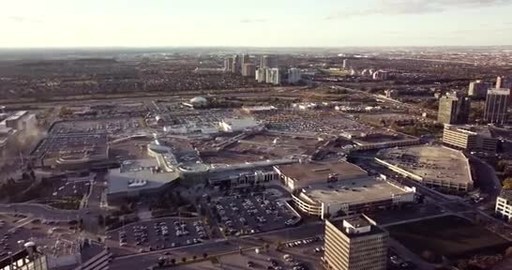For those of us who cannot read The Star article:
/CNW/ - Oxford Properties Group ("Oxford"), a leading global real estate investor, developer and manager, alongside Alberta Investment Management Corporation...

www.newswire.ca
Colour me skeptical as all the residential buildings thus far have failed to create anything close to a pleasant "walkable" and vibrant "downtown", despite the promises. And with most of the in-demand retail still left in the mall, more nail salons, banks and Subways, will probably not provide a reason to linger.
BUT...it beats parking lots. And there is nothing wrong with a concerted effort to create something better. Fingers crossed.
I am not sure what to expect here long-term in terms of walkability and "vibrancy".
More traditional downtowns developed their uses and buildings gradually over time, and had the ability to "evolve" themselves around human activity and therefore become walkable environments that evoke that sense of downtown vibrancy. Kensington Market is the super obvious example. The uses and buildings in Mississauga and Vaughan are kinda set in stone from the beginning both institutionally through our planning regime and in practice through the physical high-rise towers that are unlikely to change in form over time.
It reminds me of all our tower-in-the-park apartment neighbourhoods in the GTA. When I am around neighbourhoods like Flemingdon and Thorncliffe Park, all I can think about is how desperately these tower-in-the-park neighbourhoods are calling out for some much needed commercial activity and retail space at the base of these buildings. If this were a country with a more relaxed planning regime and property rights (not that I wish for that), then I have no doubt that makeshift retail shops and open air markets would have found their way to existing at the base of those apartment towers. And indeed, that is how the walkable downtowns of old developed, you can refer again to Kensington Market as an example to the point. But since our planning regime is based on a separation of uses, and property rights are firmly entrenched and the owners of those apartment towers would never want the liability of such markets, those apartment neighbourhoods across the GTA have effectively been locked in stasis ever since they were first constructed. They never evolved into walkable and vibrant environments despite the high density they support.
When it comes to Mississauga and Vaughan's downtowns, I am worried that even though we have learned the lessons of those apartment neighbourhoods and "fixed" many of the problems associated with them (e.g. setbacks to the street, widened sidewalks, reduction in parking, introduction of retail and mixed-use on-site), that we are still effectively replicating the primary problem here of delivering a "completed" neighbourhood that is locked in stasis from day 1.
The one saving grace for Mississauga I think rather ironically is the existence of Square One. Malls are inherently walkable and vibrant places,
because they are essentially replicating the downtowns of old. Mississauga will have Square One to
anchor their entire downtown around. Alongside some of the public spaces and squares, it is possible yet that Mississauga can create a vibrant downtown. The arterial roads through here still have ROWs that are way too large for my liking though.

/https://www.thestar.com/content/dam/thestar/news/gta/2020/01/21/massive-37-tower-project-to-be-a-real-downtown-for-mississauga-developer-says/_2_downtown.jpg)